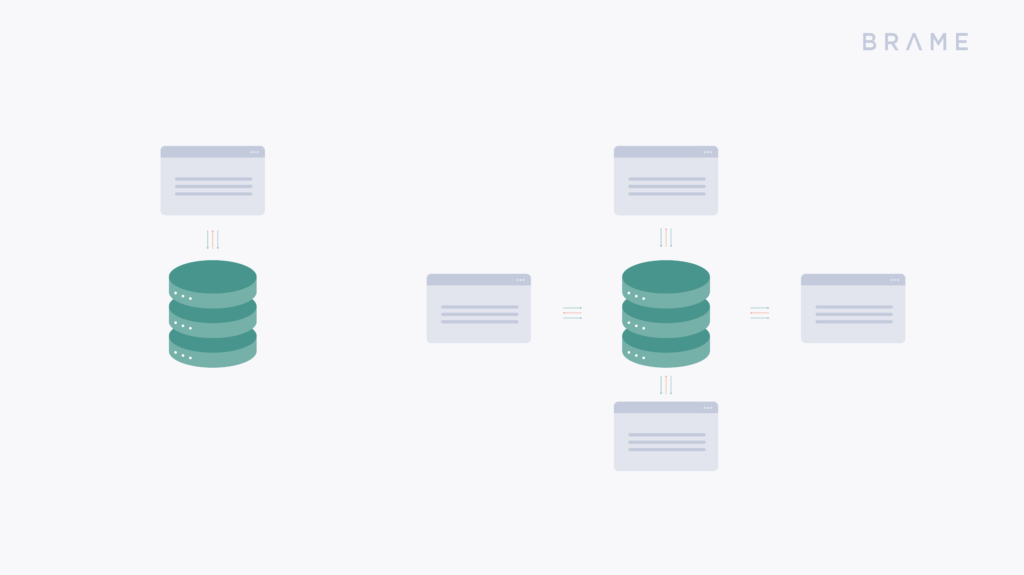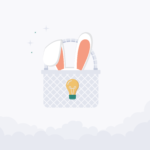Chrome’s recent rollout of a “decline cookies” option directly within its search bar is making waves, especially considering Chrome’s widespread usage as the go-to browser.
This move, part of Google’s Privacy Sandbox initiative, represents a significant shift in how user data is handled online. By seamlessly integrating this feature, Chrome is putting the power of privacy control right at users’ fingertips.
This development showcases Google’s commitment to user-centric privacy practices and sets a new standard for other browsers and digital platforms to follow suit.
Amidst Chrome’s implementation of a “decline cookies” option and the broader shift towards cookieless tracking, digital marketers find themselves at a critical turning point.
This transition to cookieless tracking and the focus on first-party data presents both challenges and opportunities.
In this blog post, we’ll:
- Compare first-party data to third-party data
- Explore zero-party data
- Talk about data protection
- Provide some tips on how to collect your data carefully
- Guide you on how to collect first-party data strategically
- Lastly, take a closer look at some strategies and tools demonstrating the added value of first-party data collection
Towards a new, cookieless path

The last decade was marked by the application of data collected and used by third-party websites. This served to strengthen the brand-customer relationship and was used extensively in B2C and B2B.
Big Data, machine learning, and artificial intelligence enabled marketers to personally target customers, and it became possible to measure this impact on the customer base. This approach will continue to be of great importance, and in the future, third-party cookies will be given a run for their money.
Based on Merkle’s 2021 Customer Engagement Report, a significant number of marketers emphasize the importance of collecting and safeguarding first-party, with 58% considering it a high priority and 30% viewing it as their top priority.
Data protection is a priority
Recently, the tide has turned toward data protection. While consumers prefer personalized and relevant advertising to traditional advertising, they also express concerns about how that same data is used.
Among the most known risks are the theft or loss of customer information and unauthorized access to customer information. As a result, regulations on the use of third-party cookies have been tightened in many places, and web browsers and technology companies have given their customers the option to disable cookies.
What are cookies?
Cookies were invented by Lou Montulli in 1994. He was a 23-year-old engineer at Netscape with the goal of improving the customer experience and facilitating web analytics.
Thanks to the cookies Lou invented, you don’t have to log in again after every page refresh. Login information can now be captured and stored in cookies.
Soon after, marketing cookies emerged, which stored information about user behavior, preferences, demographics, and login data.
Big players rely on first-party data
Personalized marketing is becoming powerful as first-party data is increasingly becoming the way of the future. High-growth brands are taking the lead in moving to a first-party data environment.
According to a Deloitte Insights survey, 61% of high-growth companies are moving to a first-party data strategy. Only 40% of negative growth companies support this strategy.
Even established companies are losing business to young companies equipped with superior analytics and collection tools.
Third-party data vs first-party data

Third-party cookies shaped the last two decades and played a key role in the rapid growth of digital ad spend. Third-party cookies will lose importance, paving the way for first-party data and cookieless tracking.
But what are the differences between the two cookie types?
| Feature | Third-party data | First-party data |
| Source | Collected from external sources not directly related to the entity using the data. | Collected directly from the entity’s own digital properties and interactions with customers. |
| Ownership | Owned by external organizations that collect data from various sources and sell or share it. | Owned by the entity that collected it, ensuring exclusive access and control. |
| Relevance and Quality | Can vary widely as it’s aggregated from diverse sources, potentially leading to less relevance to specific business needs. | Highly relevant and specific to the entity’s audience, offering higher quality and accuracy. |
| Compliance and Privacy | Higher risk of privacy issues and compliance with regulations like GDPR and CCPA, as consent may not be as clear. | Lower risk as data is collected with direct consent from users, making it more compliant with privacy regulations. |
| Cost | Can be expensive to acquire from data providers. | Incurs internal collection and processing costs, but no purchase price. |
| Application | Useful for broad targeting and gaining insights into wider market trends. | Best for personalized marketing, customer retention, and enhancing customer experience. |
| Trustworthiness | May be seen as less trustworthy by consumers due to the lack of direct relationships. | Generally more trusted by consumers as it’s collected through direct interactions. |
Third-party cookies are set by an external provider (third party) – i.e., not by the actual website one is currently on.
First-party cookies are set by the website a user is currently browsing and are blocked by browsers from other domains.
There’s more: Zero-party data.
Zero-party data refers to the information customers willingly and proactively share with businesses. Unlike first-party data, which is gathered through transactions and interactions, zero-party data is explicitly provided by individuals through surveys, preference centers, feedback forms, and other direct means.
This type of data offers deep insights into customer preferences, intentions, and desires, as it is voluntarily disclosed by the consumers themselves.
Read more about zero-party data here.
How to collect your data carefully

Effectively leveraging first-party data necessitates a strategic approach to capturing a comprehensive snapshot of customer demographics and their purchasing behaviors.
To maximize the value of this data, businesses must meticulously plan the specifics of data collection, including the type of data, the methods of collection, and the platforms used.
This entails not only identifying the relevant data points but also ensuring the data is well-organized, easily accessible, and primed for analysis.
Although establishing a robust first-party data infrastructure may demand considerable resources and sophisticated software solutions to streamline the process, the substantial benefits justify the investment.
Here are a few tips on how to collect your first-party data carefully:
Define Your Data Collection Goals
Start by identifying exactly what information you need to better understand your customer demographics and buying habits. This focus ensures you collect only the data that serves a purpose, avoiding unnecessary privacy invasions.
Choose The Right Tools And Platforms
Utilize software and platforms that are designed for data collection and management. These should offer robust security features to protect your data and should be scalable to grow with your needs.
Be Transparent With Your Customers
Clearly communicate with your customers about what data you’re collecting and why. Obtaining explicit consent not only complies with regulations like GDPR but also fosters trust with your audience.
Ensure Data Quality
Implement validation checks during the data collection process to ensure the accuracy and completeness of the data you gather. This step is crucial for maintaining the integrity of your insights.
Organize And Maintain Your Data
Keep your data well-organized and easily accessible. Regularly update and clean your database to ensure its relevance and usefulness. This includes removing outdated information and duplicates.
Educate Your Team
Make sure that everyone involved in data collection and analysis understands the importance of data privacy and knows how to handle data responsibly. Regular training sessions can help maintain high standards.
Regularly Review Your Data Collection Practices
Stay up-to-date with privacy laws and regulations, and periodically review your data collection methods to ensure they remain compliant and align with best practices.
How to get first-party data strategically
Creating a robust first-party data collection strategy starts with establishing compelling incentives for your customers to share their information willingly.
Here’s how to approach it:
Develop Attractive Incentives
The foundation of effective first-party data collection is to offer tangible benefits that motivate website visitors to share their data. Whether it’s access to premium content, additional services, exclusive offers, or the opportunity to win prizes, these incentives should be valuable enough to encourage users to trust your brand.
Emphasize Trust and Transparency
Trust is paramount when asking customers to share personal information. Clearly communicate how their data will be used and the benefits they’ll receive in return. Importantly, provide users with the easy option to withdraw their consent or modify their data preferences at any time.
This level of transparency ensures users don’t feel coerced into sharing more than they’re comfortable with.
Implement User-Friendly Consent Management
Make the process of giving, withdrawing, or altering consent as straightforward as possible. Utilize consent management platforms that allow users to adjust their data-sharing preferences effortlessly. This flexibility reinforces the sense of control and respect for user privacy.
Showcase the Value of Sharing Data
Communicate the direct benefits of data sharing to your customers. Explain how their information leads to a more personalized experience, better service, or more relevant offers. When customers understand the value exchange, they’re more likely to engage.
Leverage Effective Data Collection Tools
Employ tools and technologies that facilitate efficient data collection while ensuring security and compliance with data protection regulations. These tools can range from CRM systems to specialized software for data analysis and customer feedback collection.
Continuous Communication
Keep your customers informed about how their data is making a difference. Regular updates about new features, content, or services enabled by their shared data can reinforce the value of their contribution.
Let’s take a closer look at some strategies and tools that demonstrate the added value of first-party data collection.
Email subscriptions and newsletters
Consumers expect content that resonates with their unique preferences and needs. By incorporating customizable options into the sign-up process, you directly address this demand, enhancing customer satisfaction and deepening their trust in your brand.
Segmenting your audience according to their specific interests and goals not only makes your marketing efforts more relevant but also more effective.
This tailored approach brings two major benefits to the forefront.
Firstly, it ensures that subscriptions are driven by genuine interest, with users willingly sharing their data under clear terms of consent.
Secondly, it unlocks a plethora of marketing possibilities. Integrating targeted display campaigns or sponsored content within your newsletters transforms them into powerful tools for engaging your audience and driving your marketing objectives forward.
Content wall and premium offers
Beyond voluntary registration, another strategy involves utilizing a content wall or gated offers. Here, access to specific content is restricted and only made available once the user provides their email address or other pertinent information.
To determine the most effective content to gate, leverage your existing analytics data. This technique requires a delicate balance and should be approached with caution.
It’s crucial for providers to closely monitor how this strategy impacts website visitor behavior and community engagement, adapting as necessary to ensure a positive user experience and maintain audience interest.
Interactive content and Gamification
The surge in mobile device usage has reshaped how people access the internet, with a significant portion of users now browsing via smartphones and tablets.
This shift highlights a growing preference for content that is not only engaging and entertaining but also easy to consume on the go. Such trends present a valuable opportunity for collecting first-party data.
By tailoring your content to meet these preferences, you can better engage your audience and naturally encourage them to share their information, leveraging the mobile trend to improve your data collection strategies.
Interactive formats such as quizzes, listening actions, challenges, or puzzles are the first choices to encourage users to interact.
Gamification is a powerful tool that allows you to collect data first-hand and in real-time. The approach is subtle, and data sharing is less painful for customers. Added value is provided and implemented well, it even brings joy to the user.
Dynamic data about products or customer preferences is collected through various incentivizing mechanisms, amplifying the allure for individuals to willingly share their information.
Offering discounts, spot prizes, or personalized insights through personality tests serves as compelling incentives, motivating customers to enthusiastically share their data.

A campaign in the form of a personality test could provide insights that offer your company and your customers unique opportunities.
For example, Brame worked with Seat to create a personality test that matched potential customers with the right car based on their personal information.
With the help of this fun survey, SEAT found out more about the needs of the community, gained insight into the popularity of the models, and collected additional first-party data.
Key takeaways
We’re moving towards a future without third-party cookies. The importance of first-party data and cookieless tracking strategies is becoming increasingly apparent as it opens the door to more authentic and meaningful interactions between businesses and their audiences.
Through the strategies discussed, such as leveraging email subscriptions, gated content, and mobile engagement, businesses can collect valuable first-party data while maintaining trust and compliance.
Brame’s suite of services enables businesses to personalize customer experiences, enhance engagement, and drive conversions, all within a privacy-centric framework.
Request a free Brame demo





